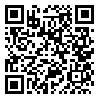BibTeX | RIS | EndNote | Medlars | ProCite | Reference Manager | RefWorks
Send citation to:
URL: http://hayat.tums.ac.ir/article-1-1573-en.html
2- The Persian Gulf Tropical Medicine Research Center, Dept. of Biostatistics, School of Health, Bushehr University of Medical Sciences, Bushehr
3- The Persian Gulf Tropical Medicine Research Center, Dept. of Health Education and Health Promotion, School of Health, Bushehr University of Medical Sciences, Bushehr ,
Background & Aim: Reducing water-pipe use is among the most effective ways to reduce chronic disease and some cancers. The aim of this study was to determine effect of education based on Health Belief Model (HBM) by health volunteers on water-pipe use among women.
Methods & Materials: This Quasi-experimental study performed on 127 women who used water-pipe (63 in the intervention group and 64 in the control group) in Bushehr in 2014. The data collection tool included demographic characteristics, the HBM constructs about water-pipe use, knowledge about water-pipe complications, and behavior (frequency of water-pipe use in last week and nicotine dependence scale). Intervention group received two sessions of education based on HBM by health volunteers. Data were analyzed using descriptive statistics, Chi-square test, Mann-whitney test, independent t-test, repeated measures ANOVA, and Friedman test on SPSS software version 18.
Results: Before education, both groups were similar in terms of demographic variables, the mean score of knowledge and all the HBM constructs (P>0.05). After education, the mean scores of HBM constructs and knowledge significantly increased and nicotine dependence decreased in the intervention group compared to the control group (P<0.001). After 3 months, the frequency of water-pipe smoking significantly reduced in the intervention group (P=0.007). But in the same period, there was no significant difference in term of the frequency of water-pipe smoking in the control group.
Conclusion: The results show that education based on the behavior change patterns by health volunteers can be effective in changing beliefs and reducing water-pipe use among women.
| Rights and permissions | |
 |
This work is licensed under a Creative Commons Attribution-NonCommercial 4.0 International License. |





